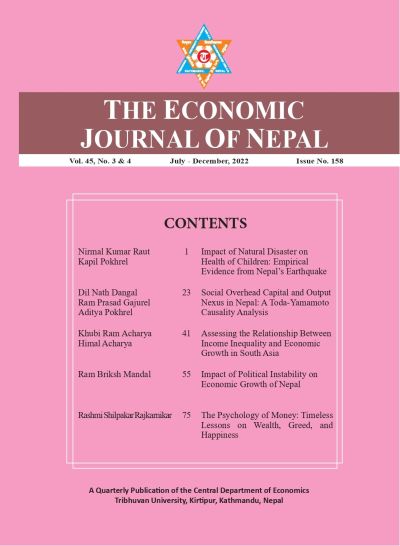Impact of Natural Disaster on Health of Children: Empirical Evidence from Nepal’s Earthquake
DOI:
https://doi.org/10.3126/ejon.v45i3-4.63145Keywords:
Natural disaster, Earthquake, Body mass index, Diff-in-diff, NepalAbstract
This study estimates the impact of the 2015 Nepal earthquake on the health of children: weight, height, and body mass index (BMI). It uses two rounds of data related to Nepal Demographic Health Surveys (NDHS) before and after the earthquake, i.e., in 2011 and 2016. The study combines child-related information and household-level data from NDHS with the earthquake data available at the district level to identify the impact of earthquakes on children’s health. By focusing on children between 0 to 5 years of age and using the difference-in- difference framework as an identification strategy, results show that the BMI increased for children living in affected areas. This increase in BMI is primarily driven by an increase in their weight. The study further shows that the BMI of children increases in earthquake-affected areas because of the increased food consumption. The study underscores the importance of being selective in the type of food-aid distributed as well as changing the consumption behavior of children during the post-disaster periods.
Downloads
Downloads
Published
How to Cite
Issue
Section
License
© Cedecon-TU




